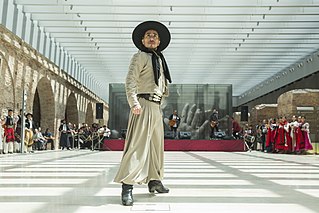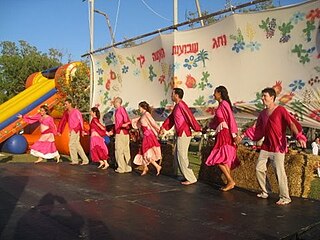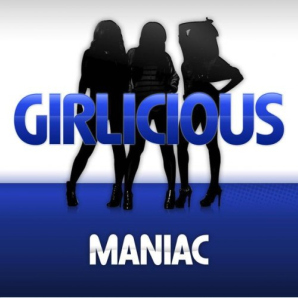
Contra dance is a folk dance made up of long lines of couples. It has mixed origins from English country dance, Scottish country dance, and French dance styles in the 17th century. Sometimes described as New England folk dance or Appalachian folk dance, contra dances can be found around the world, but are most common in the United States, Canada, and other Anglophone countries.

A folk dance is a dance developed by people that reflect the life of the people of a certain country or region. Not all ethnic dances are folk dances. For example, ritual dances or dances of ritual origin are not considered to be folk dances. Ritual dances are usually called "Religious dances" because of their purpose. The terms "ethnic" and "traditional" are used when it is required to emphasize the cultural roots of the dance. In this sense, nearly all folk dances are ethnic ones. If some dances, such as polka, cross ethnic boundaries and even cross the boundary between "folk" and "ballroom dance", ethnic differences are often considerable enough to mention.
The polka is originally a Czech dance and genre of dance music familiar throughout all of Europe and the Americas. It originated in the middle of the nineteenth century in Bohemia, now part of the Czech Republic. The polka remains a popular folk music genre in many European and American countries, and is performed by many folk artists.

A line dance is a choreographed dance with a repeated sequence of steps in which a group of people dance in one or more lines or rows, all facing either each other or in the same direction, and executing the steps at the same time. Unlike circle dancing, line dancers are not in physical contact with each other.
Line dancing is a form of dance that takes place with a group of people. Participants line up in rows and execute the same movements in a synchronized manner.
Everyone dances alone, side by side, facing the same direction in lines or rows. .... Each dance consists of a sequence of steps that are repeated throughout the music. Although a variety of music may be used, the major emphasis is on country-and-western music.
Line dancing involves people standing in lines and performing dance movements together. It consists of patterned foot movements that are usually performed to a number of counts per sequence, and then the sequence is repeated. The dances are done one-wall, two-wall, or four-wall.
The schottische is a partnered country dance that apparently originated in Bohemia. It was popular in Victorian era ballrooms as a part of the Bohemian folk-dance craze and left its traces in folk music of countries such as Argentina, Finland ("jenkka"), France, Italy, Norway ("reinlender"), Portugal and Brazil, Spain (chotis), Sweden, Denmark ("schottis"), Mexico, and the United States, among other nations. The schottische is considered by The Oxford Companion to Music to be a kind of slower polka, with continental-European origin.
22 (twenty-two) is the natural number following 21 and preceding 23.

The hornpipe is any of several dance forms played and danced in Britain and Ireland and elsewhere from the 16th century until the present day. The earliest references to hornpipes are from England with Hugh Aston's Hornepype of 1522 and others referring to Lancashire hornpipes in 1609 and 1613.
A caller is a person who prompts dance figures in such dances as line dance, square dance, and contra dance. The caller might be one of the participating dancers, though in modern country dance this is rare.

Swagger is the debut studio album by the Celtic punk band Flogging Molly, mixed by Steve Albini. It was released in 2000.

Stories and practices that are considered part of Korean folklore go back several thousand years. These tales derive from a variety of origins, including Shamanism, Confucianism, Buddhism, and more recently Christianity.

Israeli folk dancing is a form of dance usually performed to songs in Hebrew, or to other songs which have been popular in Israel, with dances choreographed for specific songs. Israeli dances include circle, partner and line dances. As almost all dances are intentionally choreographed, and the choreographers are known and attributed, the reference to these dances as "folk dances" is sometimes controversial among the general folk dance community. The recent trend of dances becoming much more complex and "professional" has led some to use the alternative term "Recreational Israeli Dancing".

Clyde Julian "Red" Foley was an American singer, musician, and radio and TV personality who made a major contribution to the growth of country music after World War II.

A bush band is a group of musicians that play Australian bush ballads. A similar bush band tradition is also found in New Zealand.

The seguidilla is an old Castilian folksong and dance form in quick triple time for two people with many regional variations. The music is generally in a major key and often begins on an offbeat.
Ukrainian dance refers to the traditional folk dances of the peoples of Ukraine.
"Frankie and Johnny" is a traditional American popular song. It tells the story of a woman, Frankie, who finds her man Johnny making love to another woman and shoots him dead. Frankie is then arrested; in some versions of the song she is also executed.
In the folk tradition, there are many traditional blues verses that have been sung over and over by many artists. Blues singers, who include many country and folk artists as well as those commonly identified with blues singers, use these traditional lyrics to fill out their blues performances. Artists like Jimmie Rodgers, the "blue yodeler", and Big Joe Turner, "the Boss of the Blues" compiled virtual encyclopedias of lyrics. Turner reputedly could sing the blues for hours without repeating himself.

"Maniac" is a song performed by American girl group Girlicious. Released as the second single from their second album, Rebuilt. It officially impacted Canadian radio on March 23, 2010. It was released to iTunes Canada on April 6, 2010. Maniac" reached number seventy-four on the Canadian Hot 100. It performed best on the Serbian Top 50 singles where it charted for eleven weeks and reached a peak of eleven.

In music, number refers to an individual song, dance, or instrumental piece which is part of a larger work of musical theatre, opera, or oratorio. It can also refer either to an individual song in a published collection or an individual song or dance in a performance of several unrelated musical pieces as in concerts and revues. Both meanings of the term have been used in American English since the second half of the 19th century.












